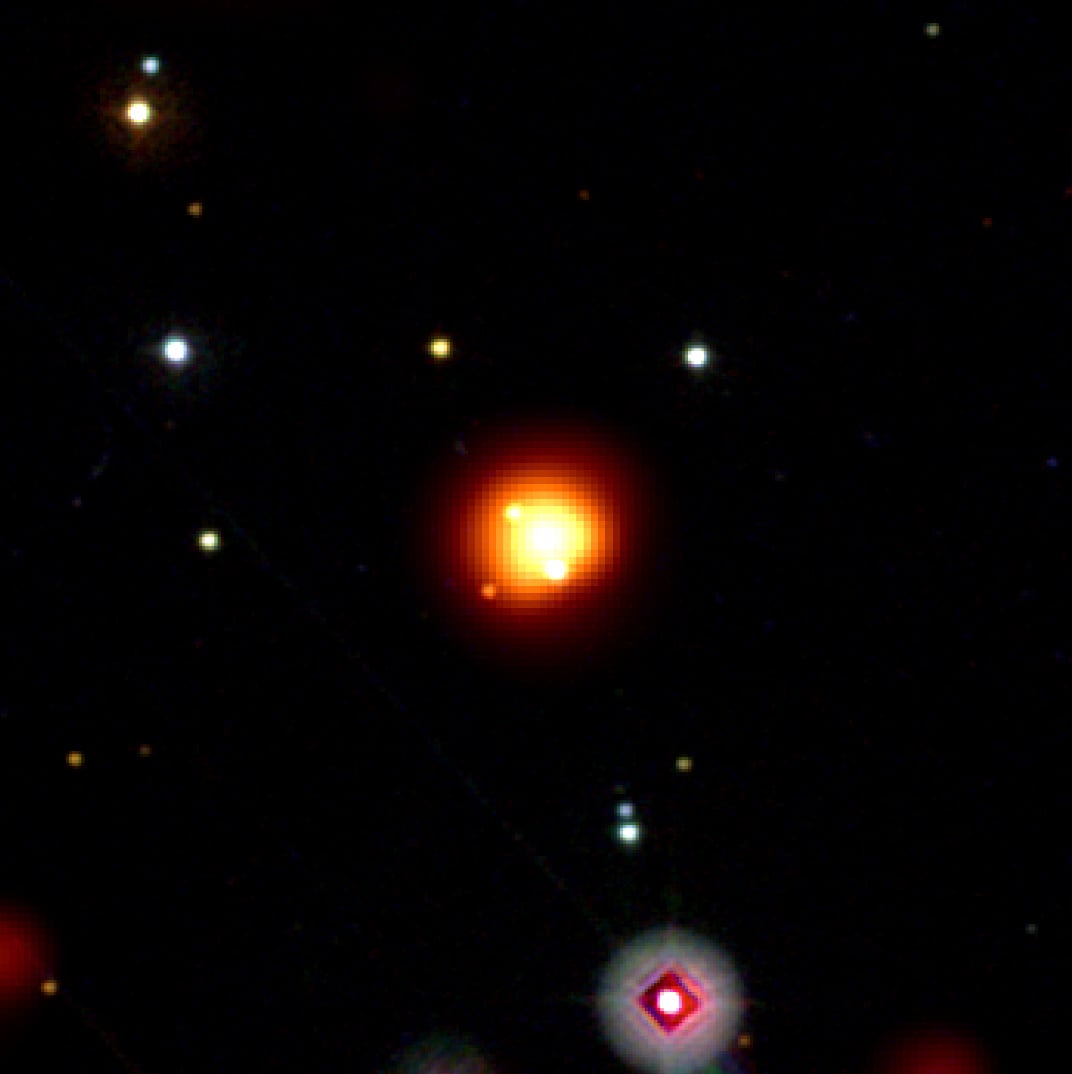[/caption]
NASA's Swift satellite captured the most distant gamma-ray burst ever detected. The blast came from an exploding star 12.8 billion light-years away, near the edge of the visible universe. Swift saw the explosion on September 13 at 1:47 am EDT. But because light moves at finite speed, and looking farther into the universe means looking back in time, this means the burst occurred less than 825 million years after the universe began, or when the universe was less than one-seventh its present age. This star was probably from the earliest generations of stars ever formed. "This is the most amazing burst Swift has seen," said the mission's lead scientist Neil Gehrels at NASA's Goddard Space Flight Center.
Gamma rays from the far-off explosion triggered Swift's Burst Alert Telescope, and the spacecraft established the event's location in the constellation Eridanus. It quickly turned to examine the spot, and less than two minutes after the alert, Swift's X-Ray Telescope began observing the position. There, it found a fading, previously unknown X-ray source. The burst has been designated as GRB 080913.
Astronomers on the ground were alerted as well and a group using ESO's 2.2 meter telescope at the LaSilla Observatory were able to make observations one minute after Swift started observing. An hour and a half later, the Very Large Telescope at Paranal, Chile, targeted the afterglow.
Astronomers look for the redshift of these objects to determine distance. The light that is emitted from an object is shifted towards the red, or less energetic end, of the electromagnetic spectrum, due to the Doppler Effect. In certain colors, the brightness of a distant object shows a characteristic drop caused by intervening gas clouds. The farther away the object is, the longer the wavelength where this fade-out begins.
Analysis of the spectrum for GRB 080913 established the blast's redshift at 6.7 -- among the most distant objects known.
Gamma-ray bursts are the universe's most luminous explosions. Most occur when massive stars run out of nuclear fuel. As their cores collapse into a black hole or neutron star, gas jets -- driven by processes not fully understood -- punch through the star and blast into space. There, they strike gas previously shed by the star and heat it, which generates bright afterglows.
Source:
NASA
 Universe Today
Universe Today
